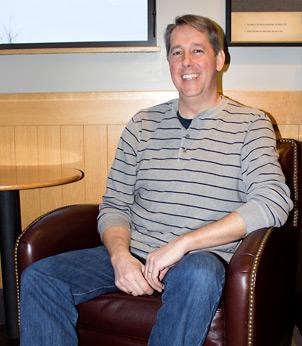A historian who grew up in Powell River is back for an extended visit and is sharing stories of the past while he is here.
Professor Keith Carlson teaches west coast aboriginal history at the University of Saskatchewan, one of Canada’s leading institutions for the study of aboriginal history and issues. He is on a sabbatical leave this year and decided to bring his family back to Powell River to spend time with his elderly parents.
“I’m doing research and writing now,” said Carlson. “I can do that pretty much anywhere, so I asked my dean if I could come out here.”
Carlson said he’s always happy to return to Powell River where he credits early inspiration from his teachers to pursue his interests.
“I had teachers here, in elementary school and high school, who said ‘push yourself, you’ve got something,’” he said.
Carlson has been interested in documenting the idea, throughout Canadian history, of why settler society has thought it was all right to separate aboriginal children from their parents and treat the first nations as second-class citizens.
He has a number of examples, some which stretch as far back as 1792, when west coast aboriginal children were bought up by Spanish explorers and taken to the first residential school set up in Acapulco, Mexico.
“They thought they were saving the kids,” said Carlson, adding that they were eventually forgotten in Mexico after the British seized control of BC’s coast.
Some examples are from as recent as the 1960s when hundreds of aboriginal children were scooped up and adopted out to white families.
Even in present day, questions are still being asked about why it took authorities as long as it did to apprehend serial murderer Robert Pickton who preyed mostly on aboriginal women on Vancouver’s Downtown Eastside.
Carlson has been here since the summer and has been giving presentations at Powell River Historical Museum and Archives. His latest, on January 28, was called “The Lynching of Louie Sam” and described the only recorded lynching in Canadian history, the subject of his book.
It is the story of how in 1884 a 14-year-old Canadian first nation boy was framed for the murder of an American shop owner in Nooksack, Washington, and about how white Americans disguised as first nations, broke him out of a Canadian jail and killed him before he was able to speak to a court translator and explain how he was framed.
“I’ve come across a whole bunch of documents buried in the BC archives that describe this event and describe a special undercover police report that was done by the BC government,” said Carlson. “They sent detectives into Washington State and found out that the boy had been framed and there was someone else that actually committed the murder and organized the lynching. The native communities in Abbotsford and Chilliwack were saying they were going to go over the border to kill a white guy. The Canadian government asked the American government to extradite the guilty man, but they refused.”
Carlson said that the Canadian government under John A. MacDonald buried it when the Americans wouldn’t hand over the man saying it wasn’t worth pursuing.



